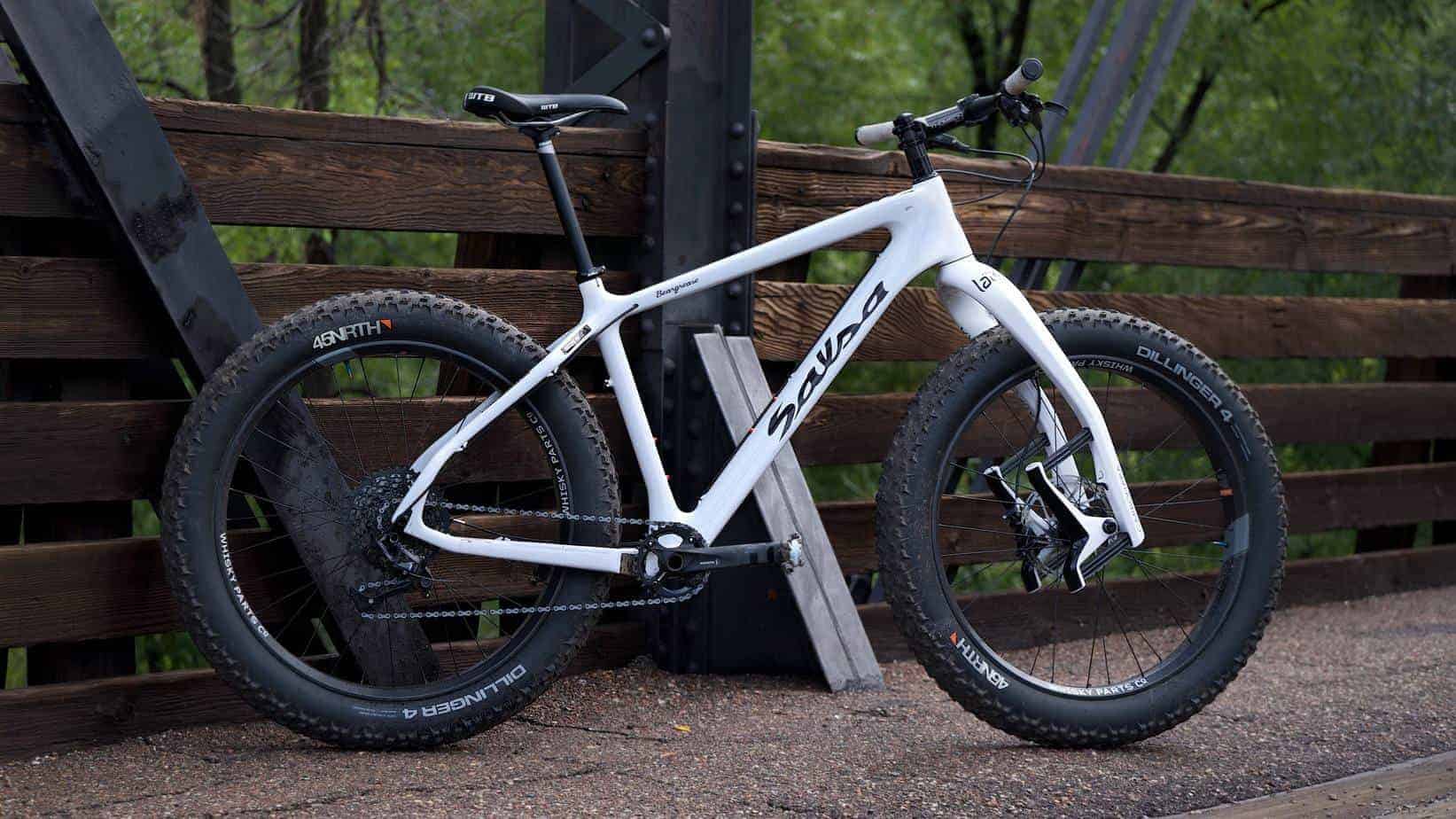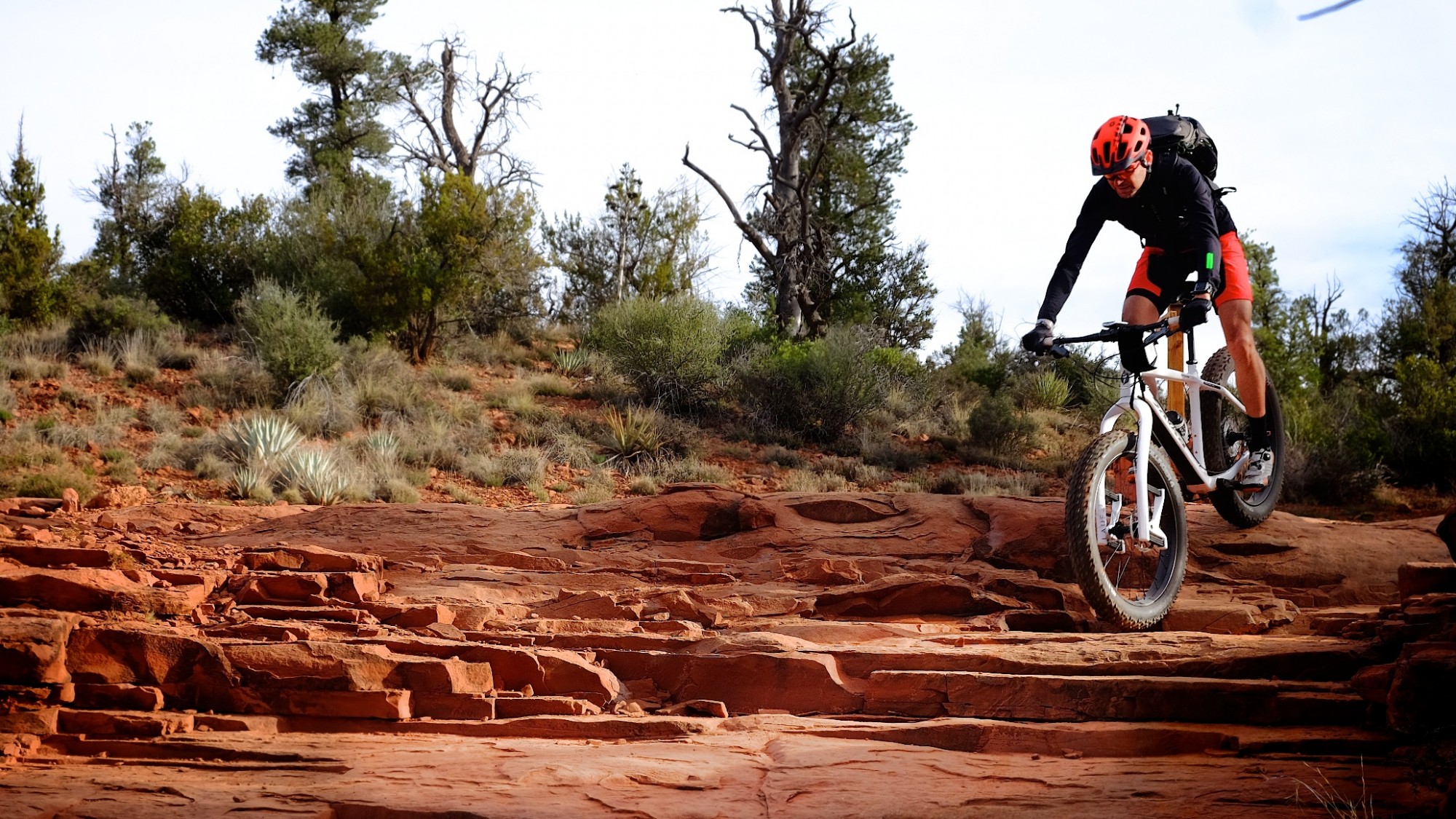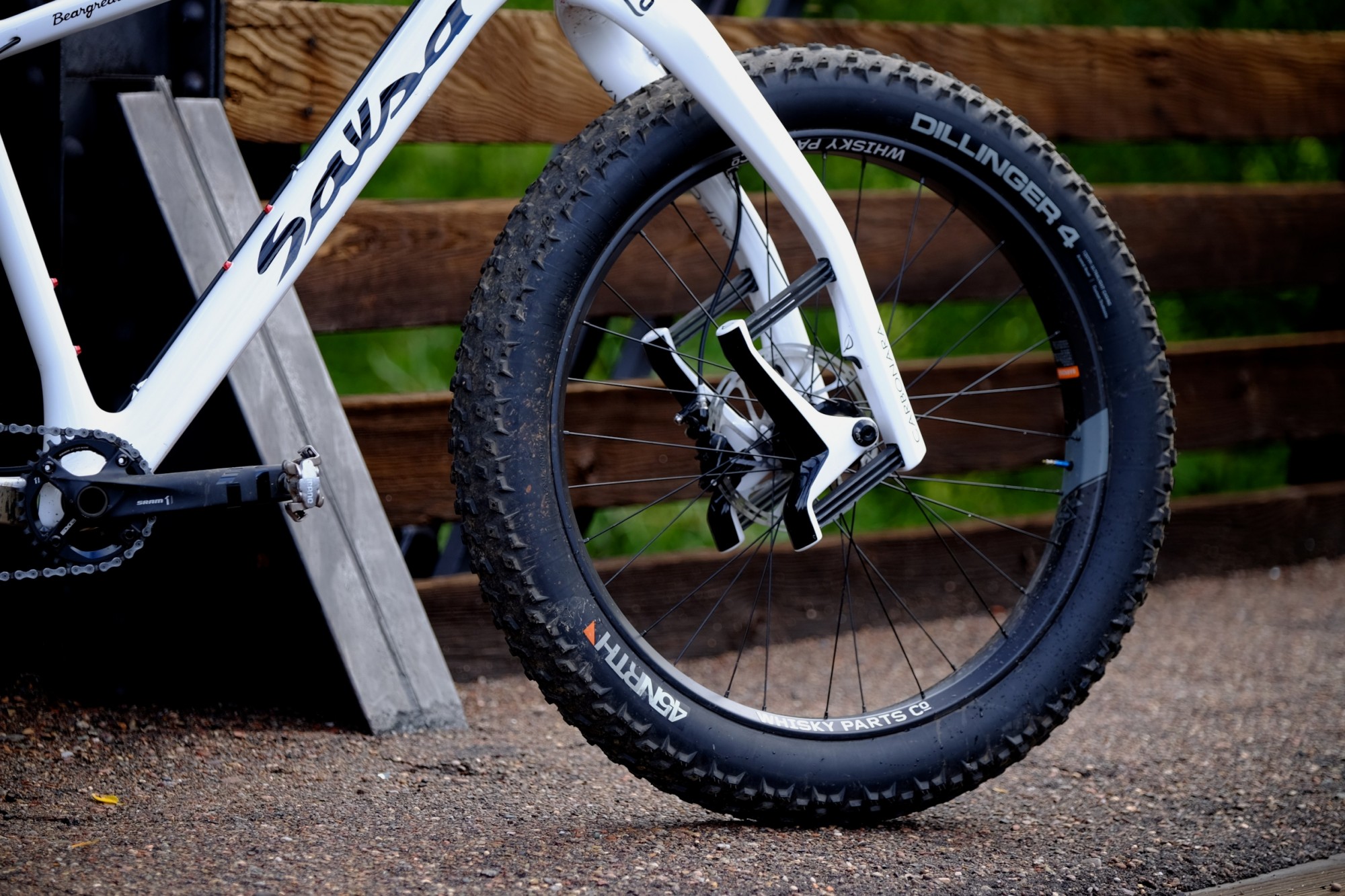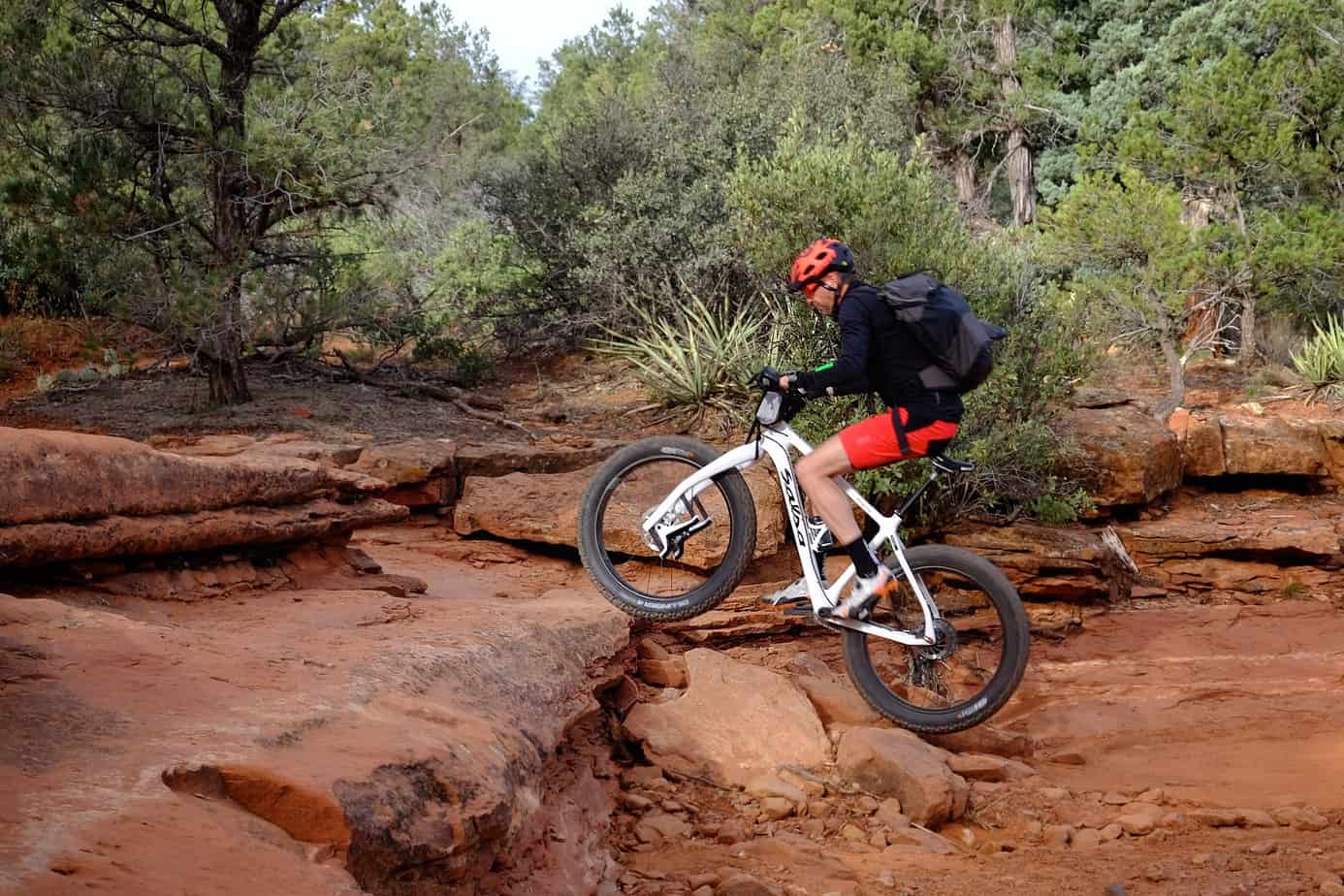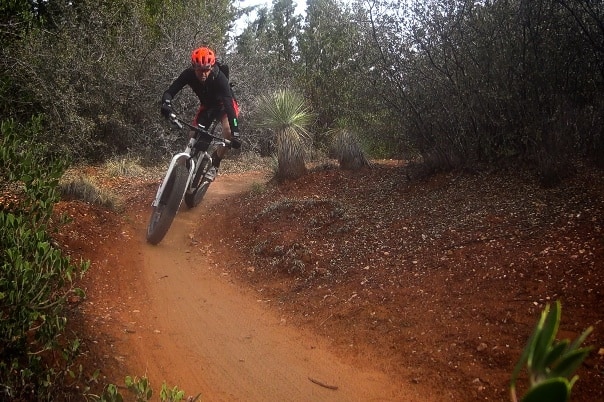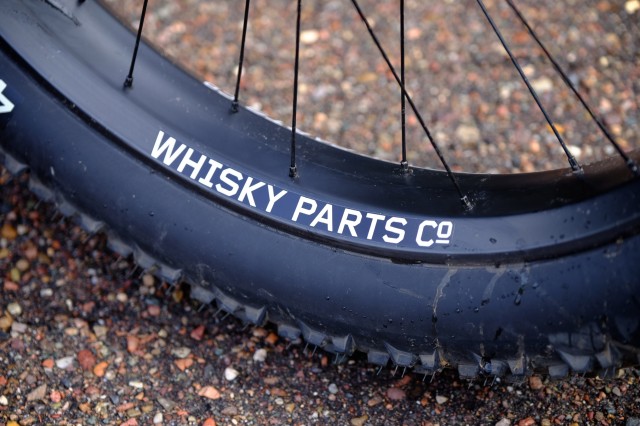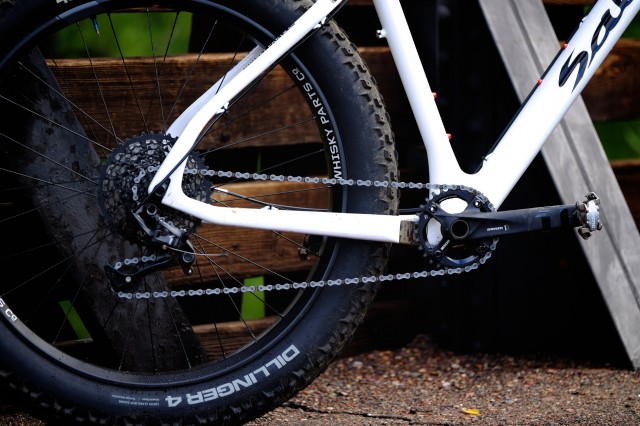When the Salsa Beargrease was first released in 2014, it instantly redefined how much speed and agility could be asked of a fatbike. The carbon fiber frame with its massive tubes ensure that no part of it flexes or yields to even the most powerful pedaling forces. Then there is the weight, or should I say the lack thereof. Right out of the box Salsa’s race-inspired fatbike is freakishly light with the bare frame tipping the scales at under 1,500 grams. That’s lighter than many Tour de France winning frames from just a few years ago.
After spending the better part of the last year riding the Carbon 1 in its stock configuration, I felt the all too familiar urge to adorn it with fancy upgrades to eek out maximum performance. This is an affliction I have suffered for many years and seeing no cure, I felt obliged to just go with it. It wasn’t long before a box arrived on my doorstep with two Whisky Parts Co. carbon fiber rims, the first of many upmarket parts to come.
At 690 grams, the aluminum Surly Marge Lite rims that came with the Carbon 1 are by no means heavy, but compared to the tubeless-ready Whisky No.9 70W carbon rims weighing only 575 grams, the weight savings were significant. After removing the original rim strips and tubes, I had culled more than one pound from each wheel.
The reward for switching to carbon rims was felt with the first rotation of the wheels. The sluggish acceleration that afflicts almost all fatbikes was all but eliminated. Shedding so much rotational weight gave the Beargrease a quick wrap-up to speed and it accentuated the already quick handling. The removal of the tubes also gave the 120tpi tires a more supple roll, particularly at lower tire pressures. In one fell swoop new rims had improved acceleration, handling, and traction.
Although the Beargrease was originally designed to dominate the many snow racing events cropping up nationwide, I am essentially a high desert dweller. As such, my Beargrease gets ridden most often as a standard singletrack ripper on dry trail. In that capacity, it is a fast and quick bike, one eager to lean into hard turns, tackle steep switchbacks, and launch over small ledges and rocks. It is a precision instrument––but she sure is bumpy.
The front gets funky
The Beargrease in other iterations has been available with a Rock Shox Bluto suspension fork just like the one I have on my full suspension Salsa Bucksaw. While I’m not displeased with the Bluto, I didn’t want such a heavy component on a feather-light carbon bike. Seeing an opportunity to try a Lauf Carbonara suspension fork, my UPS man made another visit.
At only 1,100 grams, the Lauf Carbonara clocks in at well under half the weight of a typical suspension fork. It also only has 60mm of travel, no preload, damping, or rebound adjustments, nor does it have a lockout. To add to the potential drawbacks, it costs a whopping $1,000. So––why bother?
I’ll be honest, the Lauf is a product of Iceland, and I like everything about that tiny island, so I wanted to give the Carbonara a shot. I’m pleased I did. I don’t know if it made the overall experience of riding the Beargrease better, but it did make it more interesting. I realize that isn’t a ringing endorsement.
The Carbonara employs a total of 12 military-spec S2 glass-fiber leaf springs to provide just under 2.5-inches of progressive suspension travel. What I noticed immediately was how fluid that travel is. Traditional forks slide on bushings which suffer from resistance called stiction (sticky-friction). The Carbonara has no bushings, so it doesn’t have to overcome those forces, thus allowing it to respond to the tiniest inputs. When rolling down the trail, the Carbonara gives a similar feel to riding a fatbike with 2-3 less psi in the front tire. That may not seem like a big deal, but the Carbonara does float down the trail as smooth as silk.
I know what some of you are thinking. Why not just take 2-3 psi out of the front tire and save the thousand bucks? Proper tire pressure is ideally about managing the delicate balance between compliance, rolling resistance, and traction. By using the Lauf to soak up bumps and vibrations, the front tire can be inflated to the pressure that offers the best traction with the most efficient roll.
On bigger bumps, the Lauf fork does have some interesting quirks. The lack of any damping features means impact forces are returned in earnest, so there is some potential bounce-back to mitigate. This is amplified by tire pressure, so dialing in the right psi is of critical importance. I use a digital gauge to pinpoint my preferred 9 psi with either 45nrth Dillinger 4 or Van Helga tires.
If there is one particular negative to overcome, it is the lateral flex of the two independent suspension assemblies on each fork leg. The axle has the ability to float within the fork which is an innocuous inconvenience until you go hurling into a high speed turn at an aggressive lean. In fast turns, the Carbonara gets a little vague and I find my line tends to wander. Should that line drift into a large bump or rock, the undamped rebound can force an aggressive correction.
Who says fatbikes are for snow only? Traction for days with 45Nrth tires and proper tire pressure for the conditions.
The end result of adding the Carbonara to the sharp end of the Beargrease was in my estimation––worth it. I like long days in the saddle at a swift tempo. The Lauf fork softens the edges of medium size bumps and small intrusions in the trail are muted entirely. Although I tend to ride in a part of the world with moderate weather, the Lauf is unaffected by any extremes of temperature and requires no maintenance––at all. For those looking for the ultimate suspension fork, this isn’t it. For those looking for a buttery smooth ride without adding the weight and complexity of a traditional suspension fork, nothing else beats it.
I have to confess, I didn’t expect to like the Beargrease as much as I do. I completely underestimated the degree of performance it provides and every time I go flying past another rider on the trail, I can almost always hear them mumble, “That dude is on a fatbike!” The Beargrease is––fast.
I did upgrade the standard Sram Guide brakes with the higher performance Guide RSC model with adjustable pad contact.
It took some time to get used to the look of the fork as the view from the rider’s perspective is super strange. It’s a lot of fork going on.
Carbon rims on a fatbike. Who knew? If there was ever a great use of carbon fiber, this is it.
The drivetrain is nothing exotic, but it is as reliable as a hammer. Double rings are making a comeback but I’ll gladly stick with the one ring.
Bikepacking the Beargrease
With so much performance folded into the Beargrease many people wouldn’t think of it as a suitable bikepacking platform, but I think it’s a fantastic tool for multi-day rides. The main triangle of my large frame accommodates a generously sized frame bag. With a light seat bag and backpack, I keep my gear to a minimum as to not foul the fun and fast spirit of the bike. I will admit I cringe to think of damaging a $500 carbon fiber rim, so that too compels me to keep my load as light as possible. Although I would certainly not call the Beargrease in this particular iteration delicate, I do treat it with a little extra care, something I have always done with machines built for performance.


